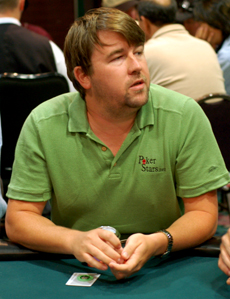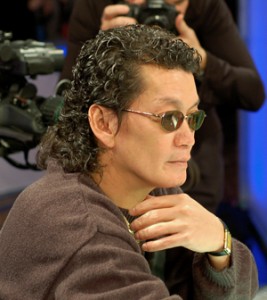You don’t talk about fight club
 Chris Moneymaker’s win was always a double-edged sword for the poker media. It began the Cinderella model of coverage with the requisite fairy tale ending — where the winner was not only the most skillful, but the most worthy of taking home the glass slipper. And the money that flowed from online poker sites for ads and affiliate deals had print and the online media heavily invested in maintaining poker’s Lake Wobegon image where “all the women are strong, all the men are good-looking, and all the children are above average.”
Chris Moneymaker’s win was always a double-edged sword for the poker media. It began the Cinderella model of coverage with the requisite fairy tale ending — where the winner was not only the most skillful, but the most worthy of taking home the glass slipper. And the money that flowed from online poker sites for ads and affiliate deals had print and the online media heavily invested in maintaining poker’s Lake Wobegon image where “all the women are strong, all the men are good-looking, and all the children are above average.”
I remember my first article for Bluff Magazine’s inaugural October 2004 issue chastised ESPN’s judgment to not only whitewash Dutch Boyd’s reputation in the poker community, but glorify “the crew.” And I guess we’re still waiting for the day they “take over the poker world.” I was actually a little surprised at the time that Bluff let me publish my swipe at ESPN. But then again, when they first started up, I was dealing with an editor from the UK who during one of our first conversations asked if Mike Matusow was a US football player.
And in 2006, when the poker shrink and I wrote our series of stories about the erroneous introduction of 2+ million chips into the WSOP main event, ESPN struggled with how to deal with it. From a number of sources I would learn that many, many iterations of proposed commentary went back and forth between Harrah’s and ESPN on just how and what to acknowledge. And although there was an acknowledgement – it was still a brush off. It was also a very difficult decision for PokerNews to publish the articles. Harrah’s was, and still is, the gorilla in tournament poker and PokerNews was risking access to future events – which would have had a very negative impact to their bottom line. Unlike ESPN, PokerNews stepped up to the plate and swung for the fences.
 But Otis had a very interesting post in Up For Poker recently, where he discusses the changing paradigm in poker coverage. ESPN’s coverage of the WSOP is decidedly different this year, from Justin Bonomo to Scotty Nguyen. Mike Paulle and I have little in common, but on one thing we agree: this really wasn’t unusual behavior for Scotty. In the past, the media just chose to show those “I love you baby” moments. That people were actually surprised by Scotty’s behavior is testament to the media’s unbelievable power to create an image that is accepted as reality.
But Otis had a very interesting post in Up For Poker recently, where he discusses the changing paradigm in poker coverage. ESPN’s coverage of the WSOP is decidedly different this year, from Justin Bonomo to Scotty Nguyen. Mike Paulle and I have little in common, but on one thing we agree: this really wasn’t unusual behavior for Scotty. In the past, the media just chose to show those “I love you baby” moments. That people were actually surprised by Scotty’s behavior is testament to the media’s unbelievable power to create an image that is accepted as reality.
I wrote a piece about Scotty back in 2003. At the time, I was disturbed by what I saw. But after talking to the folks and players that had been around the scene a lot longer than I had, Scotty’s potential to meltdown was a known entity. The article used to be on PokerPages, but I think it got lost in their last website redesign. It also was on Canadian Poker Player’s site – but they went belly up. So for the time being, I have put it here (link pending) until I figure out what to do with it. I remember sending the first draft of the article to Andy Glazer, and I guess I just don’t want to lose all that the article represents to me now. I noticed that even my piece about Dutch Boyd seems to be lost off the internet, although I still have the magazine for posterity. Who said the internet is forever.
But the real bottom line is: it’s become acceptable to talk about fight club. Collusion is covered in the media now. The AP and UB insider cheating incidents were not only reported, they were investigated.
Question: Did the poker media develop more journalistic integrity? Or did the UIGEA dry up the cash, so there’s nothing left to lose?